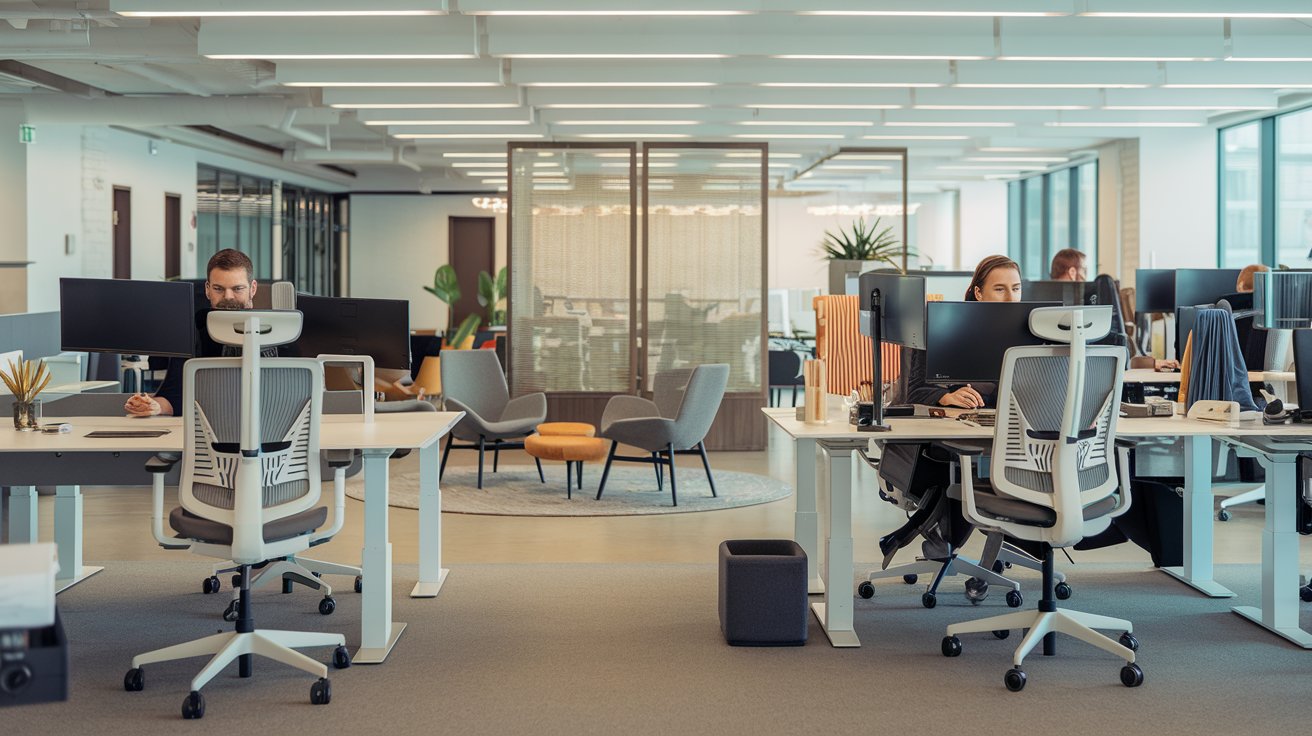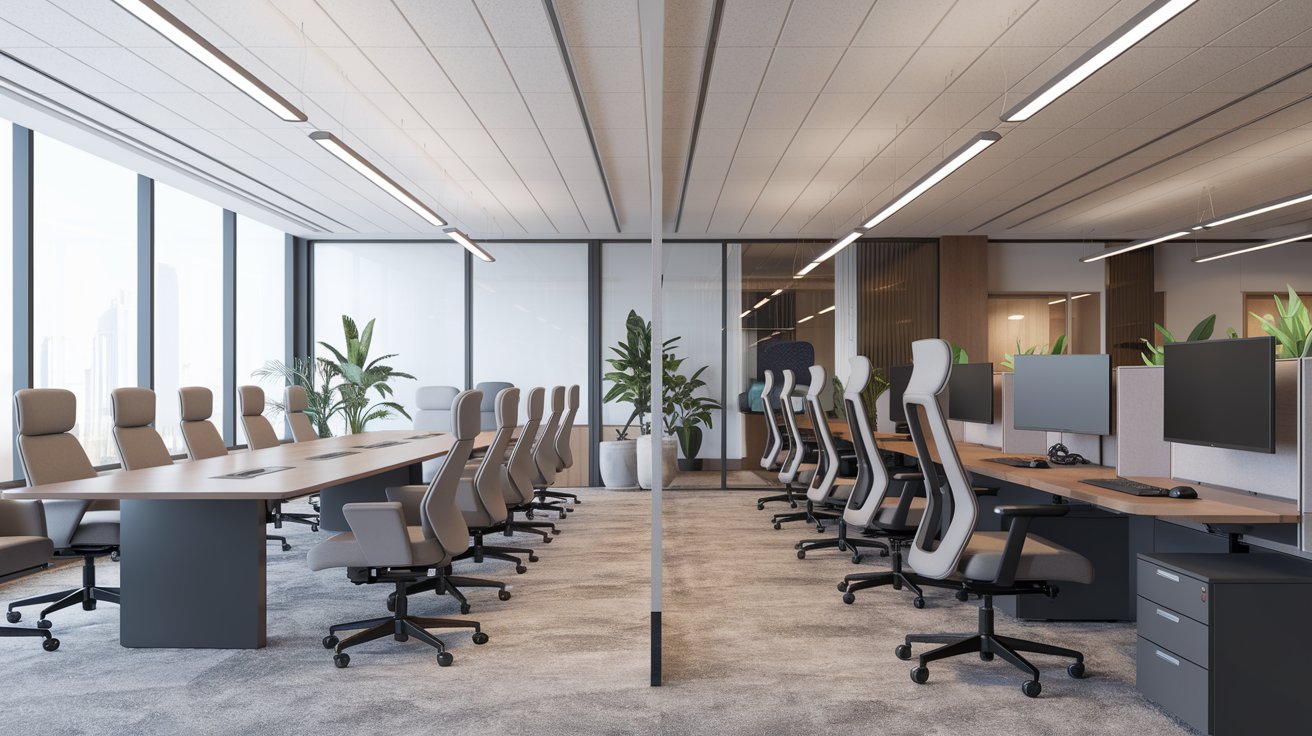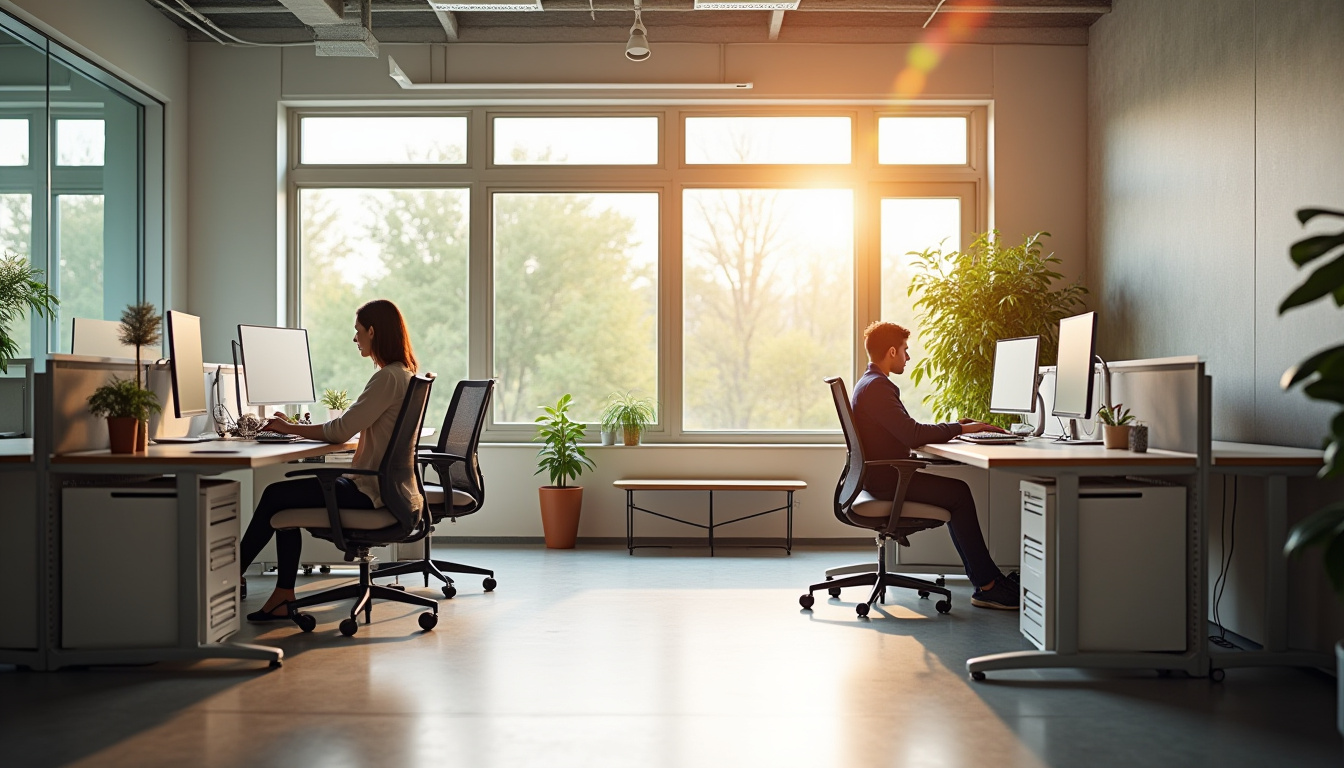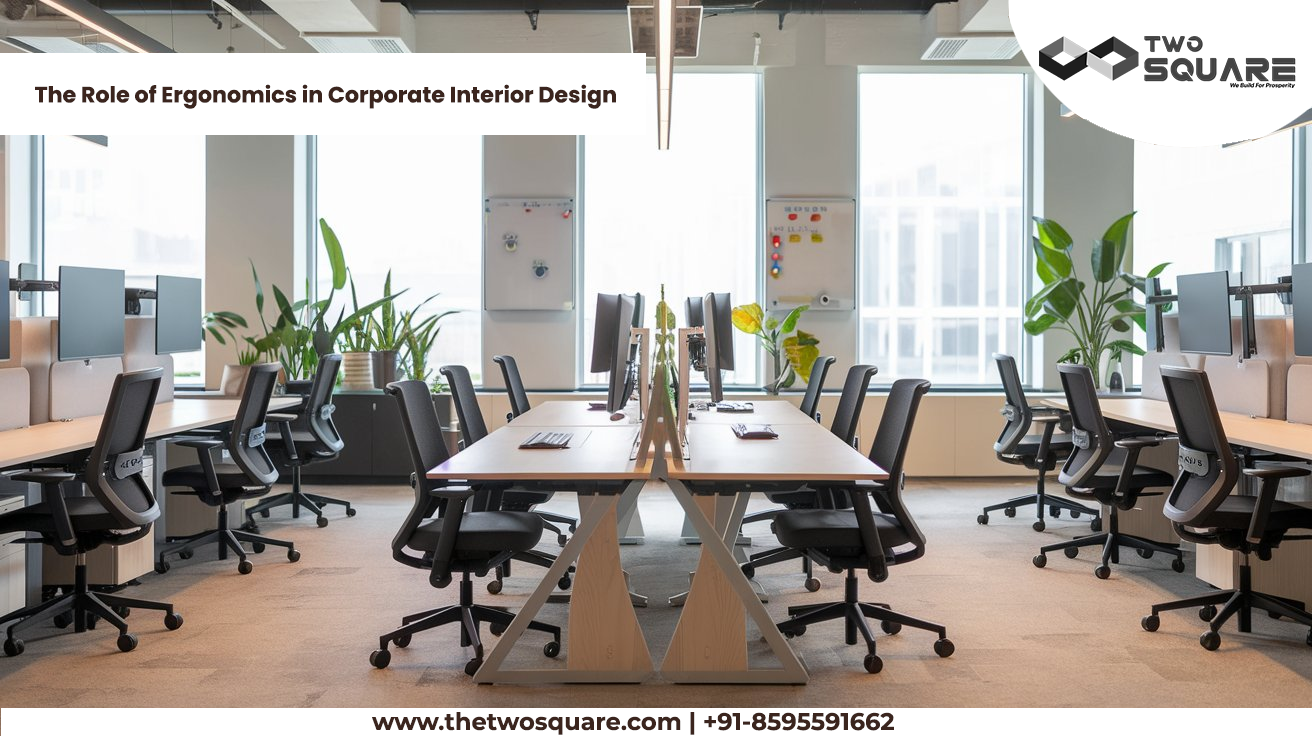The Role of Ergonomics in Corporate Interior Design
Ergonomics in Corporate Interior Design isn’t just a buzzword thrown around in modern office trends—it’s a vital strategy that can transform your workplace into a space where employees feel energized, healthy, and ready to innovate. Picture walking into an office that feels custom-built for comfort, where every desk, chair, and even the lighting seems to understand your body’s needs. When ergonomics are integrated thoughtfully into corporate interior design, it does more than just prevent back pain—it fosters a culture of well-being, boosts productivity, and even contributes to overall job satisfaction.
In this post, we’ll explore the role of ergonomics in corporate interior design in depth. We’ll discuss what it means, why it’s essential, and how smart design choices can make a significant difference in how employees perform and feel at work. Whether you’re an office manager, a designer, or a decision-maker aiming to create a dynamic workspace, understanding the practical and psychological benefits of ergonomic design is key to creating a successful, thriving work environment.
Studies show that workplaces designed with ergonomics in mind can see productivity increases of 10-20% and lower rates of employee absenteeism. Imagine a team that not only gets more done but also enjoys better health and reduced stress—all thanks to a well-planned office that listens to what the human body truly needs. As we dive into this guide, remember that ergonomics in corporate interior design isn’t just about furniture—it’s about crafting an environment that adapts to you, making every workday smoother and more fulfilling.

Understanding Ergonomics in Corporate Interior Design
What Are Ergonomics in Corporate Interior Design?
At its core, ergonomics in corporate interior design means designing office spaces that fit the physical needs and capabilities of the people who work in them. It’s about ensuring that every element—from the height of the desk to the angle of the monitor—is set up to reduce strain and prevent injury. The goal is to create a workspace that supports your natural movements and minimizes discomfort, which ultimately leads to better performance and well-being.
Ergonomics is not limited to just chairs and desks. It extends to lighting, acoustics, and even the layout of the office. When every element is designed with the user in mind, the result is a harmonious workspace where both body and mind can operate at their best.
How Ergonomics in Corporate Interior Design Benefits Your Business
When ergonomics are integrated into corporate interior design, the benefits are far-reaching:
- Improved Employee Health: Ergonomic workspaces reduce the risk of repetitive strain injuries, back pain, and eye strain. When employees are comfortable, they’re less likely to suffer from chronic health issues.
- Increased Productivity: Comfortable employees are more focused and efficient. A study by the American Society of Interior Designers (ASID) found that well-designed workplaces can boost productivity by up to 20%.
- Enhanced Employee Morale: A workspace that cares for the physical needs of its occupants sends a powerful message—that the company values its people. This can lead to higher job satisfaction and better employee retention.
- Cost Savings: While investing in ergonomic design might require an upfront expense, the long-term savings from reduced absenteeism, lower healthcare costs, and increased productivity can be substantial.
The Key Elements of Ergonomics in Corporate Interior Design
Ergonomic Furniture and Its Impact
When discussing ergonomics in corporate interior design, ergonomic furniture is a cornerstone. Here are some key elements:
Ergonomic Chairs
An ergonomic chair supports proper posture, adjusts to fit the body, and reduces pressure on the back. Look for chairs that offer adjustable seat height, lumbar support, and a flexible backrest. Employees spend most of their day sitting, so the right chair can make a huge difference in comfort and long-term health.
Adjustable Desks
Sit-stand desks are becoming a staple in modern offices. These desks allow employees to alternate between sitting and standing, which can reduce the risk of health issues associated with prolonged sitting. Ergonomic desks should also be adjustable to accommodate different body types and work styles.
Monitor and Keyboard Placement
Ergonomics in corporate interior design goes beyond furniture. The placement of monitors, keyboards, and other devices plays a crucial role in reducing eye strain and preventing repetitive strain injuries. Monitors should be positioned at eye level, and keyboards should be within easy reach to prevent overextension of the arms.
Lighting and Its Ergonomic Considerations
Lighting is another critical factor. Proper lighting reduces eye strain and can even influence mood. Natural light is ideal, but when that’s not possible, ergonomic interior design should incorporate adjustable, indirect lighting solutions. Task lighting for workstations, combined with ambient lighting that mimics natural daylight, creates a more comfortable environment.
Acoustic Elements in Ergonomic Office Design
Although it may seem unrelated, acoustics are part of ergonomics in corporate interior design. A noisy environment can lead to increased stress and decreased concentration. Soundproofing elements, acoustic panels, and thoughtful office layout design can help control noise levels, ensuring that employees can focus without distraction.
Color Schemes and Ergonomic Psychology
Color also plays a subtle yet important role. Colors affect mood and energy levels. Calming blues and greens, for instance, can reduce stress, while brighter colors might boost creativity in collaborative spaces. Ergonomic interior design takes these psychological impacts into account to create an environment that feels both energizing and calming.

Practical Strategies for Implementing Ergonomics in Corporate Interior Design
Conducting a Workspace Ergonomic Audit
Before diving into a full-scale redesign, conduct an ergonomic audit of your current workspace. Look at how employees interact with their environment. Gather feedback through surveys or one-on-one interviews to identify common issues such as discomfort, strain, or distraction. This initial assessment will provide you with a clear understanding of where improvements are needed.
Prioritizing Ergonomic Upgrades
Based on the audit, prioritize upgrades that offer the greatest benefits. This could mean investing in new chairs or upgrading to adjustable desks. Often, small changes can yield significant improvements in comfort and productivity.
Integrating Ergonomics into Office Layout
The overall layout of the office is a key component of ergonomics in corporate interior design. Design the space to promote ease of movement. Ensure that walkways are clear and that there are quiet zones where employees can work without interruption. Collaborative areas should be designed to foster interaction without creating too much noise or clutter.
Training and Educating Employees
A crucial, often overlooked part of ergonomic design is educating employees on how to use the new setup. Organize training sessions where experts can explain the benefits of ergonomic practices and demonstrate proper use of the new furniture and tools. When employees understand why certain changes have been made and how they can benefit from them, they’re more likely to embrace the new environment.
Leveraging Technology
Modern technology offers a wealth of tools to help monitor and improve ergonomic conditions. There are apps and devices that can remind employees to adjust their posture, take breaks, or even help you monitor the overall health of the workspace. These technological solutions can provide real-time feedback and further enhance the benefits of ergonomic design.
Overcoming Challenges in Ergonomic Office Design
Balancing Cost and Quality
One common challenge is finding the right balance between cost and quality. High-quality ergonomic furniture can be expensive, but the long-term benefits often outweigh the initial investment. Look for cost-effective solutions that don’t compromise on functionality. Consider phased upgrades—start with high-priority areas, then expand as you see the benefits.
Adapting to Different Work Styles
Not every employee has the same needs. Some may prefer a traditional desk setup, while others thrive in a more dynamic, flexible environment. The key is to design a workspace that is adaptable. Modular furniture and adjustable workstations allow for a range of configurations, accommodating diverse work styles and preferences.
Getting Buy-In from Leadership and Staff
Implementing major ergonomic changes requires support from both leadership and staff. Clear communication about the benefits—backed by data—can help secure the necessary buy-in. When everyone understands that these changes are not just about aesthetics, but about real improvements in health and productivity, it becomes easier to move forward with your plans.

Bringing It All Together: The Future of Ergonomics in Corporate Interior Design
Ergonomics in Corporate Interior Design is more than a trend; it’s a fundamental shift in how we think about work environments. It’s about creating spaces that are in tune with the human body, ensuring that every element—from furniture to lighting—contributes to a healthier, happier, and more productive workplace. As businesses continue to evolve, the role of ergonomics will only become more critical.
Imagine an office where every workstation is tailored to support your body, where the layout encourages movement and collaboration, and where technology and design come together seamlessly. This is the future we’re working toward—a future where ergonomics in corporate interior design isn’t a luxury, but a standard.
At The Two Square, we’re passionate about helping companies achieve this vision. We specialize in designing custom workspaces that combine cutting-edge ergonomic solutions with stylish, functional interiors. Our goal is to create environments that not only look impressive but also enhance the well-being and productivity of everyone who walks through the door.
Conclusion
In conclusion, ergonomics in corporate interior design is a powerful tool that can revolutionize your workspace. From reducing physical strain and boosting productivity to fostering a culture of well-being and collaboration, the benefits are clear. When you invest in an office that is designed with ergonomics at its core, you’re not just upgrading furniture—you’re reimagining how your team works and feels every day.
At The Two Square, we understand that a well-designed office is a key driver of success. We’re dedicated to crafting workspaces that reflect your company’s unique needs and values while incorporating the latest in ergonomic design. If you’re ready to transform your office into a place where every detail supports your team’s health and productivity, we’re here to help.
Reach out to us at The Two Square today and let’s start the journey toward a workspace that’s as dynamic, innovative, and comfortable as your team deserves. Because when it comes to ergonomics in corporate interior design, every thoughtful detail contributes to a brighter, healthier future for your business.


